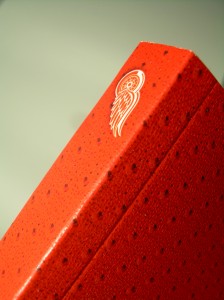Your customer has just requested a perfect bound book with enhanced capabilities to lie flat when opened. You check your list of trade bindery service providers and see that some of them promote the ability to produce Layflat Binding (or Stayflat or Otabind). Problem solved, right?
Not necessarily. There are several critical planning steps that must be considered during the design and prepress stages of the project that ultimately determine the cosmetic and functional success or failure of the book.
A successful Layflat binding style is accomplished by building the book so that the spine of the book block is not attached to the spine of the book cover as with a standard perfect bound product. The Layflat book block must first be adhered to a fabric liner rather than a book cover. The bound book block will then be attached to the cover between a pair of hinge scores specifically placed on the front and back cover. This design allows the spine of the book cover to separate from the book block when the book is opened, allowing the spine of the book block to float above the book cover. This design reduces resistance and allows for an enhanced Layflat characteristic when the book is opened.
In order to build a successful Layflat product, design and prepress planning must incorporate specific requirements for hinge scores, graphics and text placement on the covers and interior text pages. Design requirements must also provide consideration for cross alignments, page borders, and if necessary, drill hole placement. Failure to plan for these critical characteristics will result in an unhappy customer.
The Sales and Planning Professionals at Allied Bindery are prepared to assist you with the critical planning requirements for Layflat Binding. Give us a call at 248-588-5990 and let us show you how we can help ensure a successful project for you.
